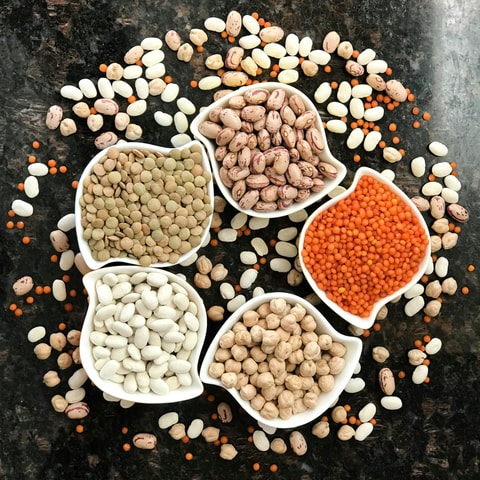Fiber in Your Diet: Why It Matters and How to Get More
Discover the role of fiber in your diet and why it matters for your health. Learn how to get more fiber with simple tips and a list of high-fiber foods
By Masha Borisova - 11/Mar/2025
Picture: Gaby Yerden

Fiber is one of the most important yet often overlooked components of a healthy diet. While it’s commonly associated with digestive health, its benefits extend far beyond that. In this article, we’ll explore why fiber matters, how it impacts your overall health, and practical tips to incorporate more fiber into your daily meals.
What is Fiber?
Fiber is a type of carbohydrate found in plant-based foods that your body cannot digest. Unlike other carbs, it passes through your digestive system mostly intact, providing a range of health benefits.
There are two main types of fiber:
Soluble Fiber: Dissolves in water to form a gel-like substance, helping to lower cholesterol and regulate blood sugar levels. Found in oats, beans, apples, and citrus fruits.
Insoluble Fiber: Adds bulk to stool and helps food pass more quickly through the stomach and intestines. Found in whole grains, nuts, and vegetables like carrots and cauliflower.
Why Fiber Matters: Key Health Benefits
1. Supports Digestive Health
Fiber promotes regular bowel movements, prevents constipation, and supports a healthy gut microbiome. It also reduces the risk of digestive disorders like irritable bowel syndrome (IBS) and diverticulitis.
2. Aids in Weight Management
High-fiber foods are more filling, helping you feel satisfied for longer. This can reduce overall calorie intake and support weight loss or maintenance.
3. Lowers Cholesterol Levels
Soluble fiber binds to cholesterol particles in the digestive system and removes them from the body, helping to lower LDL (bad) cholesterol and reduce the risk of heart disease.
4. Regulates Blood Sugar
Fiber slows the absorption of sugar, preventing spikes in blood glucose levels. This is especially beneficial for people with diabetes or those at risk of developing it.
5. Reduces Inflammation
A high-fiber diet has been linked to lower levels of inflammation in the body, which is associated with chronic diseases like heart disease, cancer, and arthritis.
6. Supports Longevity
Studies show that a diet rich in fiber is associated with a lower risk of premature death from all causes, including heart disease and cancer.
How Much Fiber Do You Need?
The recommended daily intake of fiber is: 25 grams per day for women 38 grams per day for men However, most people fall short of these recommendations. The average intake is around 15 grams per day, highlighting the need to prioritize fiber-rich foods.
How to Get More Fiber in Your Diet
1. Start Your Day with Whole Grains
Swap refined grains for whole grains like oatmeal, quinoa, or whole-grain bread. A bowl of oatmeal with berries and nuts is a delicious, fiber-packed breakfast.
2. Load Up on Fruits and Vegetables
Aim to fill half your plate with fruits and veggies at every meal. Leave the skin on whenever possible, as it’s often rich in fiber.
3. Incorporate Legumes
Beans, lentils, and chickpeas are excellent sources of fiber. Add them to soups, salads, or stews for a nutrient boost.
4. Snack on Nuts and Seeds

Almonds, chia seeds, and flaxseeds are high in fiber and make for convenient, healthy snacks.
5. Choose High-Fiber Snacks.
Opt for snacks like popcorn, whole-grain crackers, or fresh fruit instead of processed options.
6. Read Food Labels.
Check nutrition labels for fiber content and choose products with at least 3–5 grams of fiber per serving.
7. Stay Hydrated.
Fiber works best when paired with plenty of water. Aim to drink at least 8 glasses of water daily to help fiber move through your digestive system smoothly.
Foods High in Fiber
Here’s a quick list of fiber-rich foods to add to your diet:
Fruits: Apples, pears, berries, bananas, oranges
Vegetables: Broccoli, carrots, Brussels sprouts, sweet potatoes
Legumes: Black beans, lentils, chickpeas, peas
Whole Grains: Oats, quinoa, brown rice, whole-grain bread
Nuts and Seeds: Almonds, chia seeds, flaxseeds, sunflower seeds

Potential Side Effects of Increasing Fiber Too Quickly
While fiber is beneficial, adding too much too quickly can cause bloating, gas, or stomach cramps. To avoid discomfort, increase your fiber intake gradually and drink plenty of water.
Fiber is a powerhouse nutrient that plays a vital role in your overall health. From improving digestion to reducing the risk of chronic diseases, its benefits are undeniable. By incorporating more fiber-rich foods into your diet and making small, sustainable changes, you can enjoy better health and well-being.
Start today—your body will thank you!